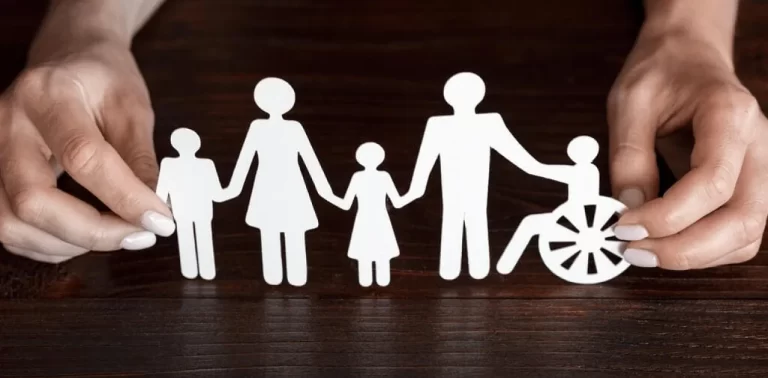Safeguarding means protecting people’s human rights, ensuring a safe and trusting environment, prioritising child protection and being aligned with safeguarding policy.
Care providers, support workers, social workers, managers, and the wider community must work together to build an environment where safeguarding is seen as a shared responsibility. This involves continuous education, clear communication, and the establishment of robust systems and practices that can effectively identify and respond to risks.
By developing a strong safeguarding culture, health and social care settings can ensure that teams are well-equipped to handle safeguarding concerns with confidence and sensitivity. This proactive approach not only enhances the quality of care but also builds trust within the community, reassuring children and adults that their safety and well-being are always a priority.
What is a Safeguarding Culture?
A safeguarding culture is an environment where people’s safety, well-being, and dignity are prioritised and protected. It involves creating a proactive, vigilant atmosphere where everyone—from care providers to support workers—actively identifies, prevents, and addresses potential risks of harm or abuse.
Safeguarding is not just a set of policies but an integral part of daily practices, ensuring that all people in health and social care settings feel safe, respected, and supported.
In health and social care settings, the responsibility of safeguarding is paramount. Building a safeguarding culture goes beyond compliance with regulations; it is about embedding a deep-rooted ethos of safety, respect, and proactive protection within every aspect of care delivery.
This culture is vital to protecting people from harm, abuse, and neglect. Creating such a culture requires a collective commitment from everyone involved. From leadership commitment to team training and community involvement, safeguarding should be intrinsic to every practice, ultimately leading to safer and more compassionate care for all.

Recognising Signs of Abuse or Neglect
Recognising the signs of abuse and neglect is crucial in safeguarding children, young people and adults. Abuse and neglect can manifest in various forms, including physical and emotional. It can also happen at home, school, work, or care settings.
Physical signs may include unexplained injuries, changes in physical appearance, or signs of malnutrition.
Emotional signs can be more subtle, such as withdrawal, difficulties with mental health, anxiety, depression, or sudden changes in behaviour.
Neglect often occurs through a lack of vital care, such as insufficient food, clothing, or medical attention, and can lead to developmental challenges in children. In adults, signs of neglect might include poor hygiene, untreated health conditions, or living in unsafe environments.
Being vigilant and aware of these signs is important, as early identification and intervention can prevent further harm. If you suspect someone is experiencing abuse or neglect, it is essential to seek help immediately, whether through local social services, helplines, or law enforcement.
Implementing Effective Reporting Procedures
Implementing effective reporting procedures in safeguarding within health and social care is critical to ensure protection and well-being. Here are key steps and considerations for establishing and maintaining robust safeguarding reporting procedures:
Develop Clear Policies and Procedures
Define Safeguarding Policies:
- Scope and Purpose: Clearly outline the aim and scope of safeguarding policies.
- Legal Framework: Align policies with relevant laws, regulations, and best practice guidelines.
- Responsibilities: Define the roles and responsibilities of all team members in safeguarding.
Procedure for Reporting:
- Reporting Channels: Establish multiple, accessible channels for reporting concerns (e.g., in person, via phone, email, or online).
- Anonymous Reporting: Allow anonymous reporting to encourage reporting without fear of retaliation.
- Emergency Reporting: Provide clear instructions for reporting emergencies or immediate dangers.
Train and Educate Staff
Comprehensive Training Programs:
- Induction Training: Include safeguarding training as part of the induction process for new employees.
- Regular Updates: Offer ongoing training sessions to keep team members updated on policies, procedures, and best practices.
- Specialised Training: Provide specialised training for team members in key roles, such as safeguarding leads or designated safeguarding officers.
Raising Awareness:
- Workshops and Seminars: Conduct regular workshops and seminars to discuss safeguarding issues and reporting procedures.
- Educational Materials: Distribute leaflets, posters, and online resources that outline recognising and reporting safeguarding concerns.
Establish a Reporting Framework
Clear Reporting Steps:
- Initial Report: Clearly outline how to make an initial report, including what information to provide.
- Documentation: Standardise the documentation process to ensure consistent and comprehensive record-keeping.
- Escalation Process: Define the steps for escalating concerns to higher authorities or external agencies.
Confidentiality and Data Protection:
- Data Security: Implement measures to ensure the confidentiality and security of all reports and related data.
- Information Sharing: Establish protocols for sharing information with relevant authorities while respecting privacy and data protection laws.
Designate Safeguarding Leads
Appoint Key Personnel:
- Designated Safeguarding Leads (DSLs): Assign specific individuals as DSLs to oversee safeguarding matters.
- Support Team: Form a support team to assist the DSLs and act as additional points of contact for reporting concerns.
Role Clarity and Accessibility:
- Role Descriptions: Clearly define the responsibilities and authority of DSLs.
- Visibility and Availability: Ensure that DSLs and the support team are visible and accessible to all team members and care recipients.
Monitor and Review
Regular Audits:
- Internal Audits: Conduct regular audits of safeguarding policies and procedures to identify areas for improvement.
- Feedback Mechanisms: Implement feedback mechanisms for team members and care recipients to report on the effectiveness of safeguarding measures.
Continuous Improvement:
- Review and Update: Regularly review and update policies and procedures based on audit findings, feedback, and changes in legislation.
- Incident Analysis: Analyse reported incidents to identify trends and areas for further training or policy enhancement.
Create a Supportive Culture
Encourage Reporting:
- Open Environment: Promote a culture of openness where teams feel comfortable reporting concerns without fear of reprisal.
- Support Services: Provide access to support services for team and care recipients affected by safeguarding concerns.
Leadership Commitment:
- Top-Down Support: Ensure leadership demonstrates a strong commitment to safeguarding through actions and communications.
- Recognition and Rewards: Recognise and reward team members for proactive safeguarding efforts and adherence to reporting procedures.
The Role of Training and Development
Training and development are crucial for effective safeguarding. From the outset, Catalyst Care Group introduces safeguarding principles to all new team members and ensures they receive regular policies and best practices updates.
Advanced, role-specific training is provided for safeguarding leads, along with practical, scenario-based learning to enhance real-life application. We take a solid approach to maintaining safeguarding knowledge. Continuous improvement is achieved through feedback mechanisms and periodic refresher courses, maintaining the highest standards of care in safeguarding practices.
Encourage a Culture of “If In Doubt, Speak Up”
Fostering a culture where speaking up is encouraged is crucial. Even when there is uncertainty, open communication is essential for effective teamwork and ensuring safety. At Catalyst Care Group, we prioritise openness and support, ensuring everyone feels empowered to voice concerns without hesitation. This approach strengthens our commitment to safeguarding and promotes a proactive approach to addressing potential risks promptly and responsibly.
The Importance of Partnership Working with MDTs
Effective partnership working with multi-disciplinary teams (MDTs) is a crucial part of best safeguarding practices; it’s also critical in addressing various safeguarding incidents, including child abuse. Health providers must collaborate closely with multiple teams, including local authorities and social workers, to promptly identify and address potential risks or incidents.
This collaborative approach ensures comprehensive support, facilitates timely interventions, and promotes a coordinated response to safeguarding challenges. By leveraging the expertise of MDTs and fostering open communication, we enhance our ability to protect people and promote their well-being effectively.
Catalyst Care Group Takes Safeguarding Culture Seriously
At Catalyst Care Group, safeguarding children, young people and adults has, and always will be, our main priority, placing people’s human rights as a cornerstone of every action and interaction.
Our comprehensive safeguarding policies adhere to current best practices and are regularly updated to meet evolving standards and regulations. Our team is committed to ensuring the safety and well-being of every person in our care. They receive thorough safeguarding training and are equipped to respond swiftly to any potential concerns, remaining dedicated to protecting human rights.
As a family of organisations, we adopt a holistic approach to caregiving and create inclusive environments for the people we serve. By actively engaging care recipients and their families in developing personalised care plans, we ensure their voices are always respected.
Get in touch with us today to learn more about safe and effective care.













